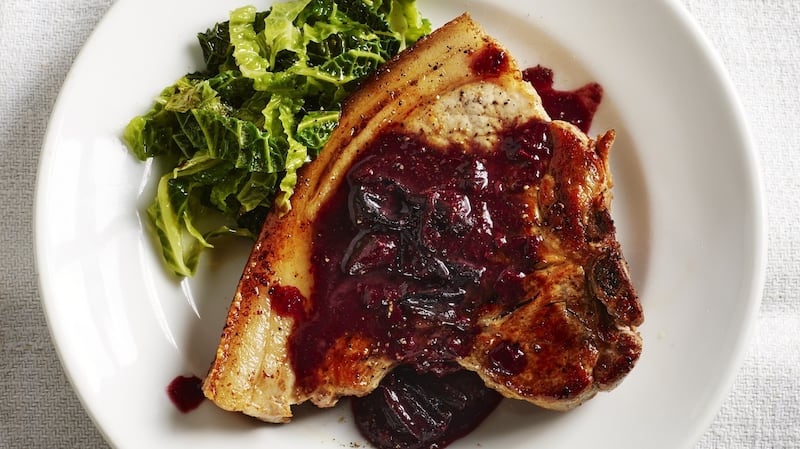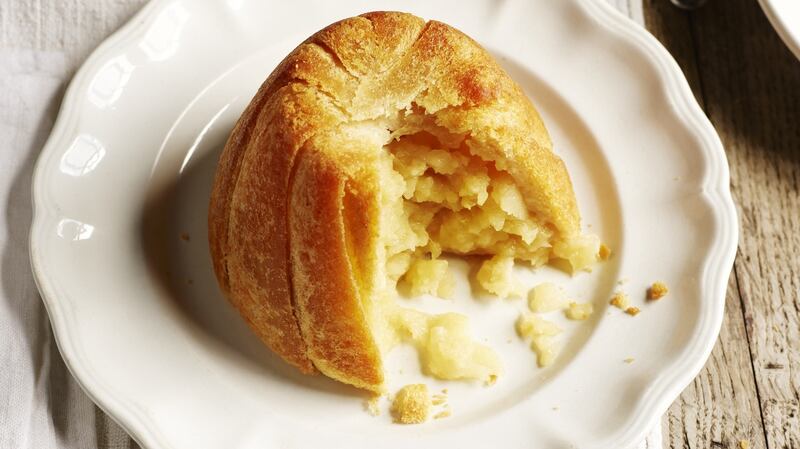Rick Stein is a party animal. He and his wife Sas can't go more than six weeks without throwing a dinner party, and they generally end up dancing till 2am. For them, waving goodbye to their guests well after midnight, rather than at the polite hour of 11pm, means that it's been a good bash.
So, what exactly is a party like in Rick and Sas Stein’s? It starts with a clear division of labour. Sas does the inviting – finding the right mix of people is very important – and gets everything organised. Not surprisingly, Rick does the cooking, and also the music, generally slipping up on the latter, and getting growled at when the Sonos system packs up, because yes, he was too busy in the kitchen and forgot to sort it before guests arrive. But in general, they don’t clash.
“I’m always saying, I’ve got to keep it simple, make something like pastitsio, and then I’ll start getting imaginative and putting in overcomplicated first courses and all that, and she will start saying, ‘Are you sure this is going to work?’ It’s one of my weaknesses,” he says.
Pastitsio, a bubbling beef, cheese and macaroni pie from Corfu in Greece, is a dish that he has become very fond of over the years, since featuring it on his Rick Stein’s Mediterranean Escapes television series. It is, he says, one of those dishes that everyone loves.
“Occasionally, I’ll do something like lobster for main course, but what I try to do is a main dish which is very easy to cook and to serve out,” he says. “I like doing roasts. I’m very traditional in what I cook at home. The trick is to have something that you know everybody loves. Because it’s not really about food, it’s about people chatting when they come round that really matters. I don’t think they care that much about what they’re eating, it’s really about who they’re sitting next to.”
Lockdown cooking
The Steins spent the first lockdown in Sydney where they were in a bubble with Sas's family, and with plenty of time on his hands, Rick worked through some of his favourite dishes. It was there that he got the idea for his latest cookbook, Rick Stein at Home, which is packed with easy to cook recipes that are perfect for an informal dinner with friends or family.
“A recipe I particularly like is braised short rib, it’s a perfect dish for serving to a lot of people,” he says. “It’s very handy because it’s one rib per person, and everybody gets exactly the right amount of meat. It looks great on the plate, and then you serve it with mashed potato. For a smaller amount of people, I like barbecued whole sea bass with fennel mayonnaise.”
The secret to having a good dinner party he says, is to forget about the starters. “I think starters generally, are a bit much. So, what we tend to do is just have big platters of what we call nibbles, like prosciutto, burrata and tomatoes,” he says. “It’s so much easier to just have big platters of stuff around where everyone is gathering. So, you can have a few glasses of Champers or wine, and a few nibbles, and then go straight into the main course. Which also makes it much easier for me. Because the big thing is not to get into cooking stuff when people arrive, and I do, because I’m very disorganised. And part of it is because I’m just looking forward to it and I end up doing bits and bobs I didn’t plan to do in the first place. So, if I just stick to the main course, it’s not going to be too hard.”
Tasty classics
If you do fancy making starters, there are plenty of ideas in his book, starting with bar snacks like feta and spinach filo cigars, crispy chicken skin, deep fried coconut prawns, and carnitas. For the more adventurous, the first course section includes a recipe for classic fish soup with rouille and croutons, but there are also simpler soups that would be a cinch to rustle up in advance.
While most of the dishes are perfect for entertaining, they are also equally delicious for a tasty family meal. Fish pie features – the secret to getting the perfect result is chilling the fish mixture in the pie dish for an hour in the fridge before adding the mash – there’s a whole chapter on vegetarian dishes, and of course desserts, the tasty classics like rhubarb crumble and apple Charlotte.
And who does the washing up after a family dinner or a night’s entertaining? “I quite like clearing up,” he says. “It’s very satisfying, it’s like a battlefield after a big party, and the gradual way you clear down things, and start to get back to normal, I think that’s sort of part of the whole thing. I’m very untidy, but I’m very thorough at cleaning up.”
Rick Stein at Home is published by BBC Books, £26. Photography by James Murphy.
Vietnamese poached chicken salad with mint & coriander
Serves 8 – 1 0 as a first course or 4 as a main course
What appeals to me about this salad is the combination of lightly poached chicken, bean sprouts, spring onions and herbs with roasted chopped nuts and sesame seeds, and the slightly gloopy fish sauce, lime juice and chilli dressing.
Ingredients
50g root ginger, peeled and sliced
4 small skinless, boneless, free-range chicken breasts
½ large cucumber
8 spring onions, trimmed, halved and shredded
150g fresh bean sprouts
Small handful mint, leaves torn into small pieces
Small handful fresh coriander sprigs
1 tbsp sesame seeds, lightly toasted
60g roasted, salted peanuts, finely chopped
For the dressing:
4 tbsp Thai fish sauce
2 tbsp red wine vinegar
2 tbsp lime juice
2 tbsp light soft brown sugar
½ tsp cornflour
1 medium-hot red chilli, finely chopped
1 garlic clove, finely chopped
Method
1 Put the ginger into a large, shallow pan with a litre of water and bring to the boil. Add the chicken breasts and leave them to simmer for 5–6 minutes. Turn off the heat and leave the chicken to cool in the liquid.
2 For the dressing, put the Thai fish sauce, vinegar, lime juice and sugar into a small pan and bring to the boil. Mix the cornflour with a teaspoon of water, stir this into the pan and simmer gently for 1 minute. Remove from the heat and leave to cool, then stir in the red chilli and garlic.
3 For the salad, peel the cucumber, cut it in half lengthways and scoop out the seeds with a teaspoon. Cut the flesh into 5cm long matchsticks and add them to a large bowl with the spring onions, bean sprouts, mint and coriander, then toss together.
4 Lift the chicken breasts out of the poaching liquid and pull them into long chunky strips. Add these to the salad bowl and mix gently. Serve the salad with the dressing drizzled over the top and scattered with sesame seeds and chopped peanuts.
Tip: When peeling ginger, use the bowl end of a teaspoon to scrape the skin off. It's much easier than using a peeler.

Pork chops with Savoy cabbage & sloes
Serves two
I came up with this recipe to highlight the pork from Mangalitsa pigs which I had filmed at a brilliant farm restaurant called Coombeshead, just outside Launceston in Cornwall. Since all of us have been subjected to nothing but very lean pork for the last 20 years, it’s really quite special to come across pigs that are reared almost more for their fat than their lean, and the meat was a reminder of how good free-range pork can be. Most felicitous too that I was filming in September when there was a bumper crop of sloes – perfect to cut the fattiness of the meat.
Ingredients
1 small Savoy cabbage (about 400g), core removed and shredded
1–2 tbsp sunflower oil
2 pork chops (each about 250g)
Good handful sloes, bullaces or unripe plums
15g butter (only needed if the pork chops don't yield much fat)
1 banana shallot, finely chopped
1 large garlic clove, finely chopped or grated
100ml red wine
A few fresh thyme sprigs
100–120ml chicken stock
1 tbsp honey or soft brown sugar
Salt and black pepper
Method
1 Boil the cabbage in salted water for 3 minutes, then drain. Put it in a pan with the oil, stir to coat, then season. Cover and cook over a very low heat for 20 minutes to soften.
2 Prepare the fruit by removing the stones with your fingers or a cherry stoner, or poach it for a few minutes in little water first. This makes it easier to remove the stones. Keep the flesh and the liquid, if poaching, for the sauce and discard the stones.
3 Season the pork chops on both sides. Cook them in a frying pan for 4–6 minutes on each side (depending on thickness), or until they reach an internal temperature of 71°C. Transfer the chops to a plate, cover with foil and leave to rest for about 5 minutes while you make the sauce. Leave the fat in the pan.
4 You want about a tablespoon of pork fat in the frying pan – just pour off any excess and keep it for another recipe. If the chops haven't yielded much fat, add the butter. Add the shallot and garlic and soften for a minute or so, then add the remaining ingredients, including the fruit and any poaching water. Bring to the boil and simmer for 3–5 minutes, then season to taste. Serve the sauce with the chops and cabbage.
Tips: Don't even think of throwing the excess fat away. Render it down for the best lard you're ever going to eat. Pick and prepare sloes or bullaces when in season, then freeze them.

Apple Charlotte
Serves four
I’ve mentioned the television series that I recently filmed in Cornwall often in this book, mainly because most of the recipes in the programmes are for dishes I cook at home a lot. The runaway success of the series was this apple Charlotte, which I cooked in an orchard at Tresillian House, near Newquay. It’s a very special recipe – my mother’s and one of her favourites.
Ingredients
125g butter
350g Bramley apples
350g Cox's apples
2 tbsp sugar
A little grated lemon zest, to taste
6–8 slices white bread, about 5mm thick, crusts removed
Custard, clotted cream or ice cream, to serve
Method
1 Grease a pudding basin, about 15cm in diameter and 10cm deep, with plenty of the butter. Peel, core and finely slice the apples. Rinse in cold water and put them in a saucepan with the sugar, lemon zest and 30g of the butter. Cook to a pulp over a low heat and then beat to a purée with a wooden spoon. Allow to cool. Preheat the oven to 200°C/Fan 180°C.
2 Melt the remaining butter. Dip each slice of bread into the butter and then line a pudding basin with about three quarters of the slices. Pack them in tightly and don't leave any gaps. Spoon in the cooled apple purée and cover with the remaining buttered pieces of bread and gently push down.
Tightly cover the pudding with foil and bake for about 30 minutes. Remove the foil and bake for a further 8–10 minutes until the top is golden brown. Leave the pudding to rest for 5 minutes before turning out on to a serving plate. Serve with custard, clotted cream or ice cream.
Tip: I love the clean taste of apple and lemon in this, as cooked by my mum, but you could add a good pinch of ground cloves or some ground cinnamon if you like.










